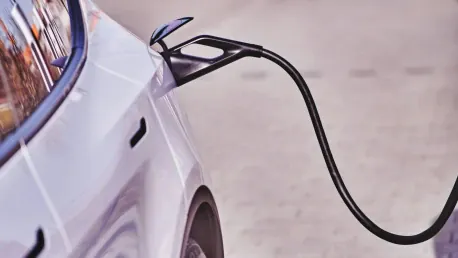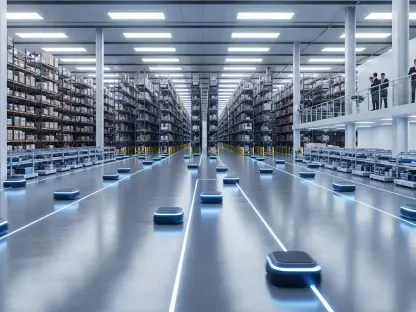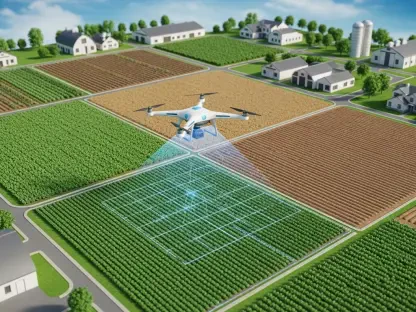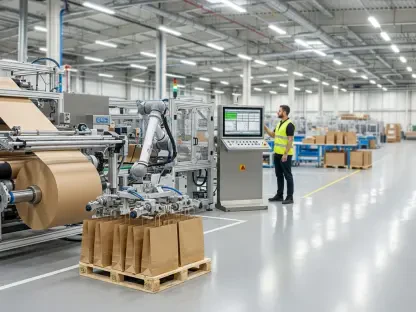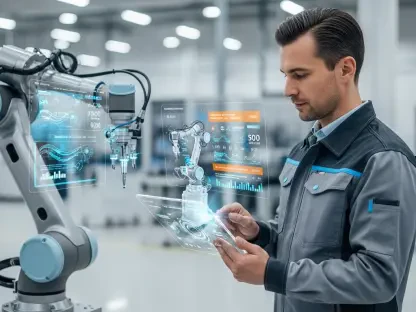Electric vehicles (EVs) are on the brink of a significant transformation with the advent of bidirectional charging technology. This innovation is set to redefine the role of EVs, turning them into not just a means of transportation but also valuable energy assets. By 2025, major automakers are expected to incorporate this technology into their EV models, enabling these vehicles to provide power to homes, tools, and the electrical grid.
Bidirectional charging, also known as vehicle-to-home (V2H) or vehicle-to-everything (V2X), allows an EV’s battery to both charge from and discharge power to various sources. This capability could revolutionize energy consumption and storage, offering backup power during outages, efficient home energy management, and even contributions to the electrical grid. The anticipation is that this functionality will make EVs integral to energy ecosystems, positioning them as not only transportation devices but also as key components in the broader energy infrastructure.
Major Automakers and Adoption
The adoption of bidirectional charging is set to grow rapidly, with a significant increase expected starting in 2025. Leading automakers such as Ford, GM, Volvo, and Tesla are at the forefront of this technological shift. These companies are integrating bidirectional charging into their new EV models, making it a standard feature rather than a niche application. For instance, GM plans to roll out V2X technology across all its new EVs by 2026. This widespread adoption will likely accelerate as more EVs become equipped with this capability, moving beyond early adopters to mainstream consumers.
The commitment from these major players signals a promising future for bidirectional charging technology. By leveraging their considerable resources and technological prowess, these companies are poised to drive the mass adoption of this innovative feature. The rapid integration of bidirectional charging technology is also expected to spur competitive advancements across the industry, leading to further improvements in efficiency, cost, and user-friendliness. As more manufacturers jump on board, the market penetration of bidirectional charging systems will likely grow, ultimately benefiting consumers through broader options and enhanced performance.
Applications and Benefits for Commercial Fleets
Commercial fleets stand to gain significantly from bidirectional charging technology. Fleet owners, such as those managing UPS delivery trucks, school buses, or public transit vehicles, can leverage vehicle-to-grid (V2G) systems to optimize energy use. These systems allow fleets to charge during off-peak hours when electricity rates are lower and discharge power back to the grid during peak demand periods. This approach not only enhances energy management but also reduces operational costs. By participating in energy arbitrage, fleet operators can generate additional revenue and contribute to grid stability.
The ability to manage energy demands and schedules efficiently makes bidirectional charging an attractive option for commercial applications. For example, a fleet of school buses can be charged overnight and then used to provide power back to the grid during the daytime when the buses are not in use. This dual-purpose functionality ensures that fleets remain operational while simultaneously supporting the energy grid. The technology also offers the potential for substantial cost savings, as fleet operators can take advantage of lower electricity rates during non-peak hours to charge their vehicles. Consequently, bidirectional charging systems can significantly improve the economic viability and sustainability of commercial fleets, making them an attractive investment for a range of businesses.
Residential Use and Home Energy Management
For residential users, bidirectional charging offers numerous benefits. Vehicle-to-home (V2H) systems can provide backup power during outages, ensuring that essential appliances and systems remain operational. This capability is particularly valuable in regions prone to power disruptions. Moreover, bidirectional charging enables homeowners to manage energy costs through arbitrage. By charging their EVs during periods of low electricity prices and discharging power back to the grid when rates are high, users can optimize their energy expenses. This functionality is similar to existing home battery systems like the Tesla Powerwall but with the added advantage of mobility.
The potential for significant cost savings and added convenience makes bidirectional charging a compelling option for homeowners. Residential users can leverage their EVs to reduce reliance on the grid, lower energy bills, and contribute to environmental sustainability. Additionally, by providing an alternative source of power during outages, bidirectional charging systems enhance the overall resilience and reliability of home energy infrastructure. As technology becomes more accessible and affordable, it is expected that more homeowners will adopt bidirectional charging systems, leading to widespread benefits at both individual and community levels.
Advanced Home Energy Management Systems
To fully harness the benefits of bidirectional charging, sophisticated home energy management systems are essential. These systems can automatically manage the charging and discharging of EVs based on electricity prices and household energy needs. By optimizing charging times and leveraging lower electricity rates, users can achieve significant cost savings. Automakers are partnering with energy companies to develop and refine these management systems. For example, Ford has teamed up with Sunrun to create integrated solutions for home energy management. Similarly, GM’s GM Energy PowerBank system aims to provide seamless energy management for EV owners. These collaborations are crucial for the widespread adoption of bidirectional charging technology.
The development of advanced home energy management systems will also help to address some of the challenges associated with bidirectional charging. These systems can be designed to be user-friendly and intuitive, making it easier for homeowners to take full advantage of the technology. Moreover, they can offer real-time monitoring and control, providing users with greater visibility and flexibility in managing their energy use. By integrating features such as predictive analytics and smart grid connectivity, these systems can maximize the efficiency and effectiveness of bidirectional charging, paving the way for a smarter and more sustainable energy future.
Comparison with Home Battery Systems
There is an ongoing debate about whether bidirectional charging will completely replace traditional home battery systems. While EVs equipped with bidirectional charging can offer substantial backup power, experts suggest that both technologies will coexist. Each has its unique advantages and use cases. Bidirectional charging is particularly useful in settings where installing a home battery is impractical, such as in multifamily residences. In these scenarios, EVs can serve as a flexible and mobile energy storage solution.
On the other hand, home battery systems provide dedicated energy storage for households, ensuring a consistent power supply without relying on the availability of an EV. This consistency can be particularly important in situations where the EV is not present or is being used for transportation. Additionally, home battery systems can be designed to meet specific storage and power requirements, offering tailored solutions for different energy needs. Therefore, while bidirectional charging brings significant benefits and extends the functionality of EVs, it is likely to complement rather than entirely replace home battery systems in providing comprehensive energy storage solutions.
Technical and Practical Aspects
The technical implementation of bidirectional charging involves converting the stored DC power in an EV’s battery into AC power for home or grid use. When fully charged, the average EV can hold enough power to support a home for about two days. This makes EVs a practical solution for emergency power backup. Vehicle-to-load (V2L) capabilities allow EVs to power external devices such as camping gear or home appliances. This feature provides an immediate and accessible use of the stored energy without significant barriers. The dual functionality of EVs as both mobility solutions and energy storage units offers compelling use cases for everyday power management and emergencies.
The practicality of bidirectional charging extends beyond just energy consumption. It also includes integrating the EV seamlessly into a broader energy ecosystem that encompasses homes, businesses, and the electrical grid. In an ideal setup, smart energy management systems would orchestrate the charging and discharging of vehicles, ensuring optimal energy use and cost efficiency. This level of integration would not only support individual energy needs but also enhance overall grid stability and sustainability. The potential for such smart, interconnected energy systems underscores the transformative impact that bidirectional charging technology could have on how energy is produced, stored, and consumed.
Challenges to Implementation
Despite the promising potential of bidirectional charging, several challenges need to be addressed for widespread adoption. One major hurdle is vehicle and charger compatibility. Not all EVs currently support bidirectional charging, although this is expected to change as more manufacturers integrate the technology. Installation costs and the need for compatible home infrastructure also present significant barriers. Older homes, in particular, may require electrical upgrades to support bidirectional charging systems. These upgrades can be costly and may deter some homeowners from adopting the technology.
Furthermore, the regulatory environment plays a crucial role in the adoption of bidirectional charging. Different states and countries have varying regulations regarding energy arbitrage and net metering, which complicates the integration of bidirectional charging systems into existing energy infrastructures. Policymakers and regulatory bodies need to address these issues to create a more conducive environment for the widespread use of bidirectional charging. Finally, concerns about battery life and warranty persist. While manufacturers assure that bidirectional charging will not significantly impact battery longevity, careful management is essential to avoid excessive degradation. Addressing these challenges will be critical to realizing the full potential of bidirectional charging technology and fostering its widespread adoption.
Conclusion
Bidirectional charging marks a significant advancement in incorporating electric vehicles (EVs) into both home and grid energy management systems. While there are still challenges related to infrastructure, costs, and regulations, ongoing advancements and adoption by major automakers indicate a bright future where EVs will play a pivotal role in energy storage and management. This innovative technology is poised to be a crucial element in the transition to more sustainable and resilient energy systems, offering valuable dual functionality for both transportation and energy backup.
The ability to use EVs as mobile energy sources allows for greater stability in energy grids, and provides homeowners with a reliable backup power source during outages. This dual-use capability optimizes the investment in EVs, making them more than just a means of transportation. It also represents a significant step toward reducing our dependence on fossil fuels and supporting renewable energy sources like wind and solar power, which can be intermittent.
As more automakers and technology companies invest in bidirectional charging solutions, the infrastructure will likely evolve to support widespread adoption. This evolution requires collaboration between government bodies, utility companies, and private sector stakeholders to overcome regulatory and logistical challenges. In the coming years, the integration of bidirectional charging in EVs is expected to transform how energy systems operate, promoting a cleaner, more efficient, and interconnected energy future for everyone.
